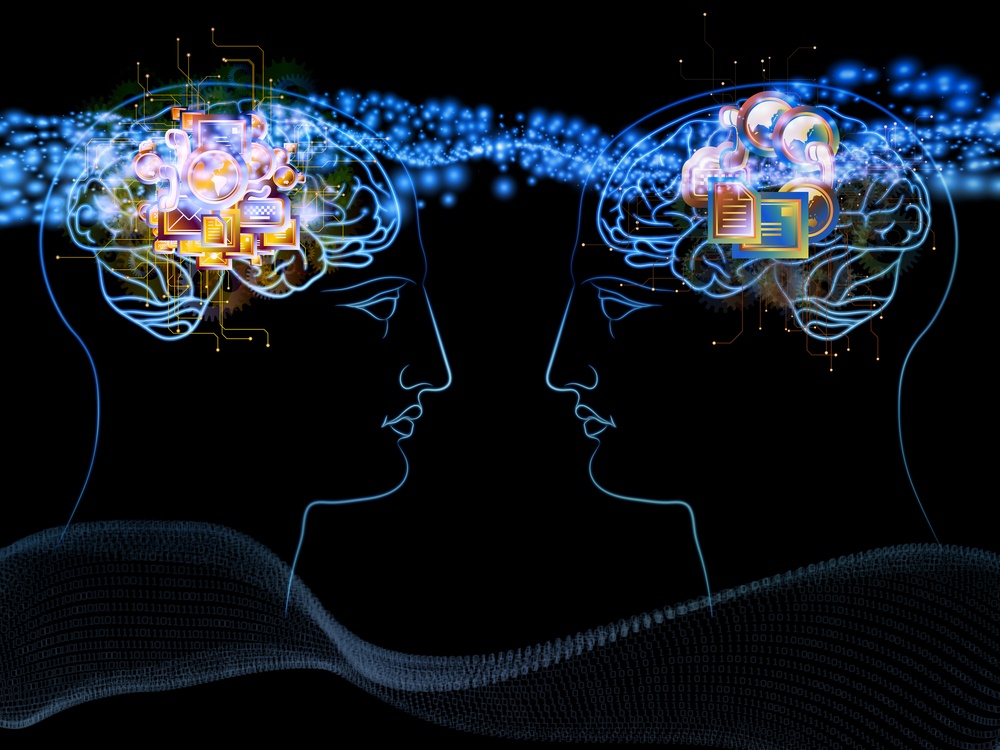Cultivating A Collaborative Learning Culture With Learning Sociology
This article is part of a series on overcoming remote working challenges by building learning experiences that are based on solid learning science. What you are about to read is a fable. The company, AshCom, is fictional, but the learning challenges faced by Kathryn, AshCom’s CLO, and her team are real and commonly shared by learning teams in large organizations. It is our hope that you will be able to connect with the characters, their challenges, and the solutions they discover. We also invite you to read the first eBook in the series.

A Team Of Deep Thinkers
Kathryn lifted the plastic cover from her smoked salmon salad as the others on her learning team found their lunches and their seats. A slight smile lifted the corners of her mouth as she looked around the room. She was proud of this team and all they had accomplished in the last two years. They were not just doers. They were also deep thinkers, people who had the ability to consider a learning challenge and work their way through it. This team developed a full needs assessment tool that they used every week. Although new to them, the members of her team built a true game to help build financial literacy among the hundreds of managers at AshCom.
The challenge before them now was not difficult from an implementation perspective. AshCom intended to give 1400 of its 7000 employees the opportunity to work remotely. The Chief Human Resources Officer of AshCom, a man named Laszlo, asked Kathryn to begin to develop what would be needed to provide virtual learning experiences for the new remote employees. This in itself was not a difficult task. Her team had built multiple virtual learning experiences. But this would be the first time multiple learning paths would be entirely virtual.
As everyone around the table started their lunch, Kathryn said, “I’m looking around the room and am so excited to work with all of you talented people. Going back and thinking through the core elements of learning science is helping me get my head around the task in front of us. The conversations we’ve already had on brain science and psychology have given me a lot to consider.”
Kathryn continued, “But what we cover today is what has me most concerned about a completely virtual learning experience for our remote workers. The social part of learning is such an important part of how we help people learn how to do their jobs well. Virtual learning as a part of a larger curriculum is one thing. Doing that entirely remotely has me concerned.”
Several heads around the table nodded in agreement.
“And so, I am anxious to hear what Michael has to present to us today. All of you know that Michael was a college professor and administrator for his entire career until he retired and joined our team. What you might not know is that as an undergrad, he majored in sociology.”
Psychology Homework
Michael started laughing. “You know, Kathryn, that was more than 30 years ago, right? Actually, more than 35 years ago. Completing the homework assignment you gave me on psychology and virtual learning was a lot more than digging up old textbooks or notes from when I was a student. I had to start all over.”
Kathryn smiled. “Of course I didn’t expect you to have all the research you needed at your fingertips. But I also know that your time in university administration gave you a deep appreciation for the social aspect of learning.”
“True,” replied Michael. “So let me start at a very basic level with a definition of sociology. I don’t mean to get into a debate over definitions, so I’ll ask you to accept this description. Sociology is basically a study of how people interact. Within their own groups and between various kinds of groups. It involved individuals, societies, groups, subgroups, and communities. These can be very large, like the entire population of the state of Minnesota or very small like the maintenance crew in this plant.”
“This is far less academic than I thought it might be,” teased Maggie, one of the Instructional Designers who had been with AshCom the longest.
“I’ll take that as a compliment,” replied Michael. “That’s how you meant it, correct?”
“Isn’t that how it sounded?” said Maggie.
Michael continued, “We have had some conversations about the culture of learning, and we should talk a little about that before we get into remote learning because it ties to some aspects of sociology. Every organization has a learning culture. Some are solid and healthy. Some are neither of those things. A good learning culture is one in which learners are empowered to find their niche and their value through learning. It fosters learning. It builds a community where desired behavior is modeled and reinforced by others.”
Michael paused a moment to let that sink in.
Cognition And Psychology Components Of Learning
“Let me make it simpler. Learning is a cognitive process, as we talked about with Darryl. Psychology is certainly in play too, as Maggie pointed out. Focusing on the human mind and behavior.” Michael went to the whiteboard and wrote “Cognition” and “Psychology” on it.
“So, let’s hold on to those two components of learning,” he continued. But let’s also remember that learning is a cognitive process that doesn’t happen in a vacuum. It actually takes place in a social context. We learn by observing others and imitating them. We learn in conversations.” He then drew a circle around the two words on the whiteboard and wrote “Social Context” next to the circle.
“You are touching on one of my greatest concerns about an all-virtual learning path for people working remotely,” said Kathryn. “Actually, I also worry about how people will function at work without a social context.”
“That concern is legitimate,” replied Michael. “There is a lot to be said for virtual learning. It can be just-in-time when people need it. It can foster interest in continuous learning and allow learners to explore on their own. But there is a concern about the possible lack of a social context within which people learn. A learning community, if you will. People learn on the job while standing next to another learner, not just from an instructor or facilitator. They also learn from each other. The social environment matters.”
“I think sometimes these are the very best learning experiences,” said Darryl. “So how do we build fully digital learning experiences without losing social learning?”
“Great segue,” said Michael. “There are ways to provide a strong social context, but we have to be very intentional about how we will do that. We have to plan for it. I want to talk about some ways we can foster social learning among people who will be learning virtually and remotely.”
Exploring Digital Spaces
Michael went back to the whiteboard and wrote “Digital Spaces.”
He continued, “We need to build in virtual spaces where people with similar responsibilities can share what they know, ask questions, and discuss things that are important to their group. This will strengthen not only their learning but also their social network. Dedicated spaces tend to build community. It will not be the same as standing next to one’s co-workers, but remote learners don’t have to exist in isolation.”
“Ok,” said Kathryn. “That’s one. What else?”
“Oh, I have more,” teased Michael. “One of the benefits of being in a social setting is that we get immediate feedback. People’s words, body language, and facial expressions are constantly giving us feedback. That’s why a conversation provides a lot more information than an email. So, as we build virtual learning experiences, we need to think carefully about how we will enable learners to get immediate and solid feedback—and not just from someone who might be facilitating the learning. We need to find a way to give peer-to-peer feedback. This will give learners a stronger sense of connectedness and community.” Michael wrote “Quality Feedback” on the whiteboard.
“That will require some thinking and planning around technical solutions,” said Kathryn.
“It will,” said Michael. “More on that in a few minutes. Next, I want us to think about how we might build coaching and mentoring structures into our learning. Of course, this will depend on the topic, but from a sociological perspective, spending time one-on-one with a mentor will be a powerful tool even if it is done remotely.” Michael wrote “Mentoring/Coaching” on the whiteboard.
“More technical solutions?” asked Kathryn smiling.
The IT Element
“You’ll just have to be patient for a few more minutes,” said Michael laughing. “Actually, the technical solutions come now. I’m not going to give an exhaustive list of social technology tools at this point. But we need to build that list and talk to our IT department about what is available to us. These tools can help us socially connect learners across the entire company. With in-person learning, people who work in the same facility get to know each other. With virtual learning, we have the chance to connect learners in every facility across the United States. There is an opportunity for really healthy social learning here if we pay careful attention to it.”
“Some great things for us to consider,” said Kathryn. “Opportunities even. Anything else? We are close to the end of our scheduled time.”
“A handful of quick things. More like tips and tricks,” said Michael. “Encouraging learners to keep their cameras on during instructor-led learning helps keep people engaged and models the kind of behavior that AshCom expects. Even small things like being intentional about our tone and grammar in all our communications.”
“One final comment,” said Michael. “This I would not consider a minor element and should apply to everything we create. Learners need to see themselves well represented in the learning experience. This means that the graphics, visuals, language, and scenarios should be as inclusive as possible. When we do this right, learners get a stronger sense of belonging. That they are part of the group.”
Adeena, one of the Instructional Designers, perked up at Michael’s last comment. “I think now you are stepping into my topic for next time. I have linguistics as my science.”
“I don’t mean to do that,” replied Michael. “Consider it a good setup for you.”
Kathryn intervened. “Time’s up. Michael, this has been an excellent presentation. Adeena is next and we can dive more deeply into the topic of language and how it might help us understand the creation of virtual learning. Thanks everyone! I encourage you to keep talking on your own, which is, of course, social learning. See you next time.”
Conclusion
Download the eBook Embracing Remote Working Challenges: How To Launch Learning Experiences Built On Solid Learning Science to discover how you can overcome obstacles with targeted solutions backed by learning psychology and proven methodologies. You can also join the webinar to discover which scientific principles are relevant for remote workforce training.



![The Science Of Learning: Bridging Theory And Practice For Modern Learning [eBook Launch]](https://cdn.elearningindustry.com/wp-content/uploads/2025/01/Science-Of-Learning-The-Connection-Between-Sciences-And-LD.jpg)




